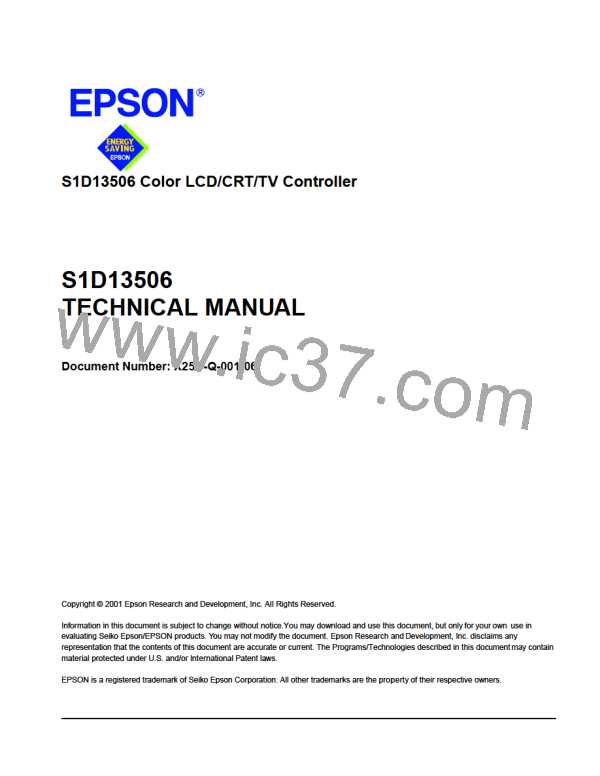Epson Research and Development
Page 143
Vancouver Design Center
14.2.10 Ink Layer
The functions in this section support the hardware ink layer. These functions are nearly
identical to the routines to control the hardware cursor.
The same S1D13506 uses the same hardware for both hardware cursor and ink layer which
means that only the cursor or the ink layer can be active at any given time.The difference
between the hardware cursor and the ink layer is that in cursor mode the image is a
maximum of 64x64 pixels and can be moved around the display while in ink layer mode
the image is as large as the physical size of the display and is fixed in position. Both the ink
layer and hardware cursor have the same number of colors and handle these colors identi-
cally.
DWORD seInitInk(void)
DWORD seInitLcdInk(void)
DWORD seInitCrtInk(void)
DWORD seInitTvInk(void)
Description:
These functions initialize the ink layer for use. The initialization includes: allocating ink
layer memory, filling the ink layer image with a transparent color, and enabling the ink
layer.
If memory was previously allocated for the ink layer or a hardware cursor on the surface
then this memory is first released.
Call seInitInk() to initialize the ink layer for the current active surface.
Call seInitLcdInk(), seInitCrtInk(), and seInitTvInk() to initialize the ink layer for the sur-
face indicated in the display name.
Parameters:
None.
Return Value:
The return value is the thirty-two bit offset in CPU address space to the start of the ink
layer memory. If there is an error the return value is 0.
Note
On 16-bit DOS systems the return value must be converted into a segment:offset before
use.
Programming Notes and Examples
Issue Date: 01/02/06
S1D13506
X25B-G-003-03

 EPSON [ EPSON COMPANY ]
EPSON [ EPSON COMPANY ]